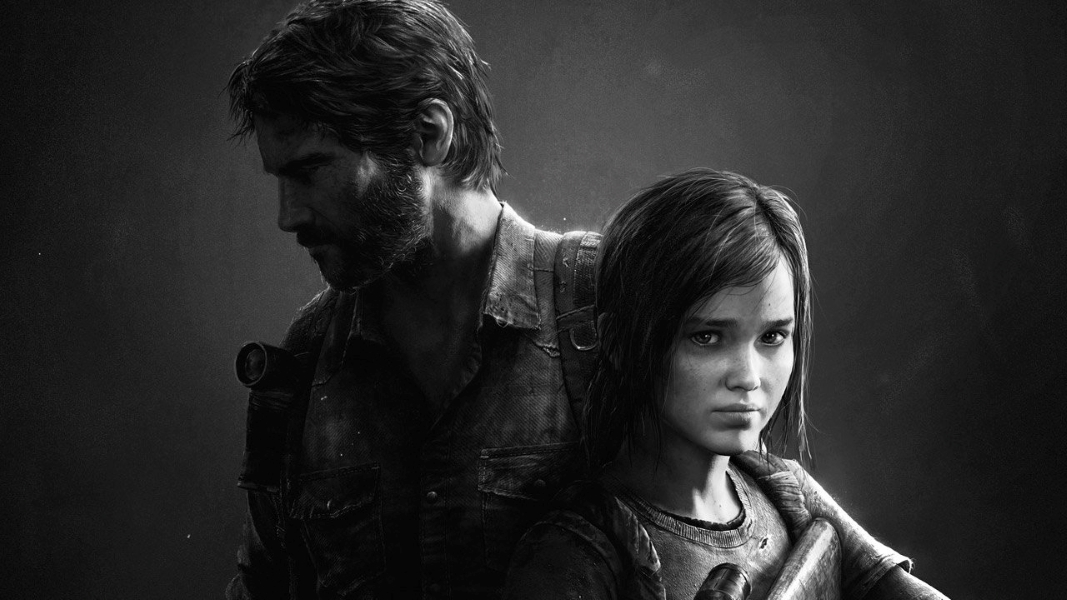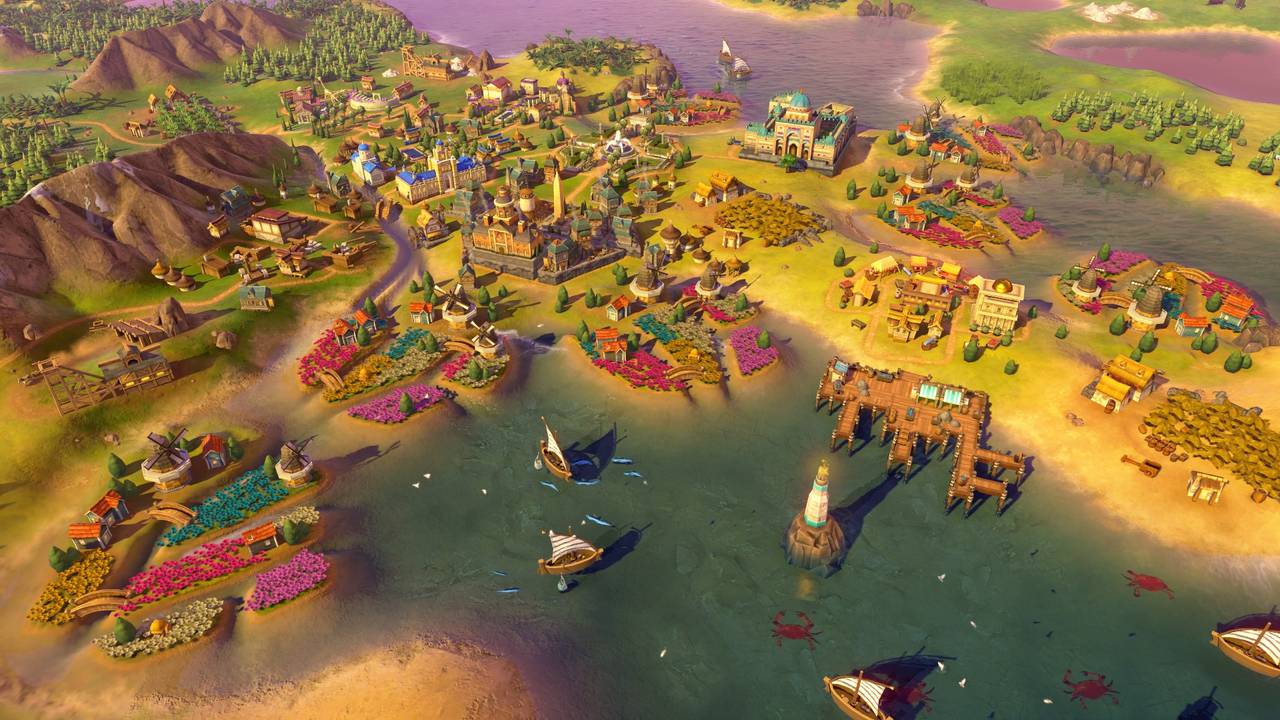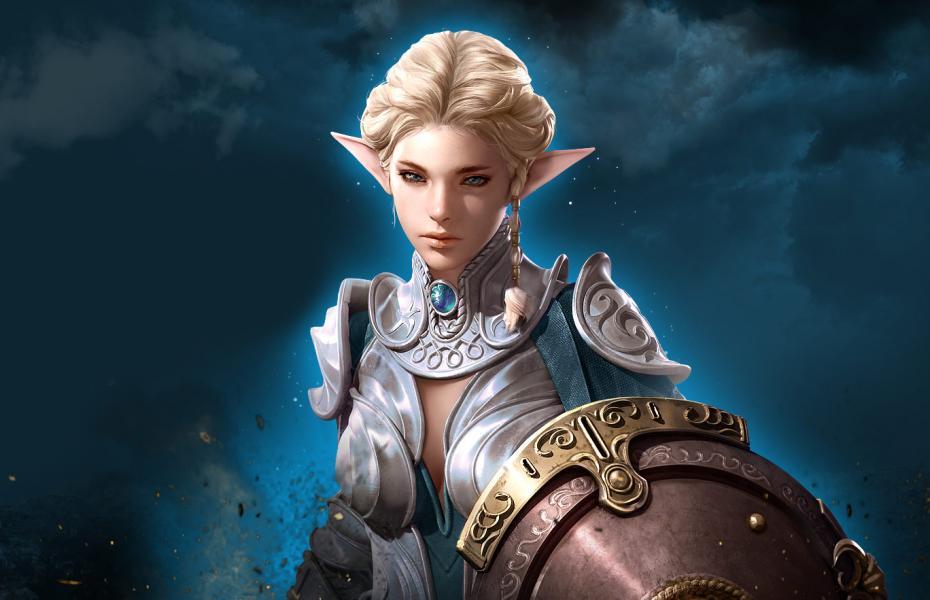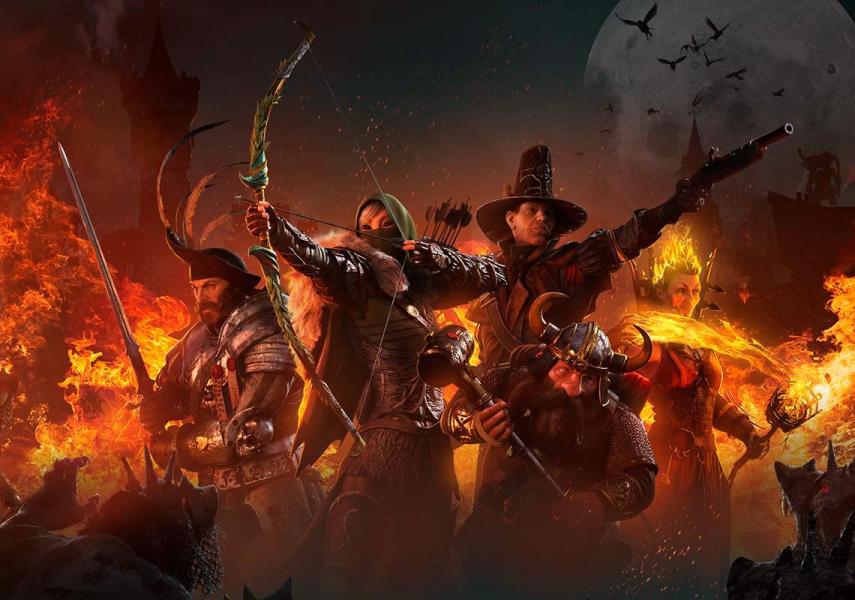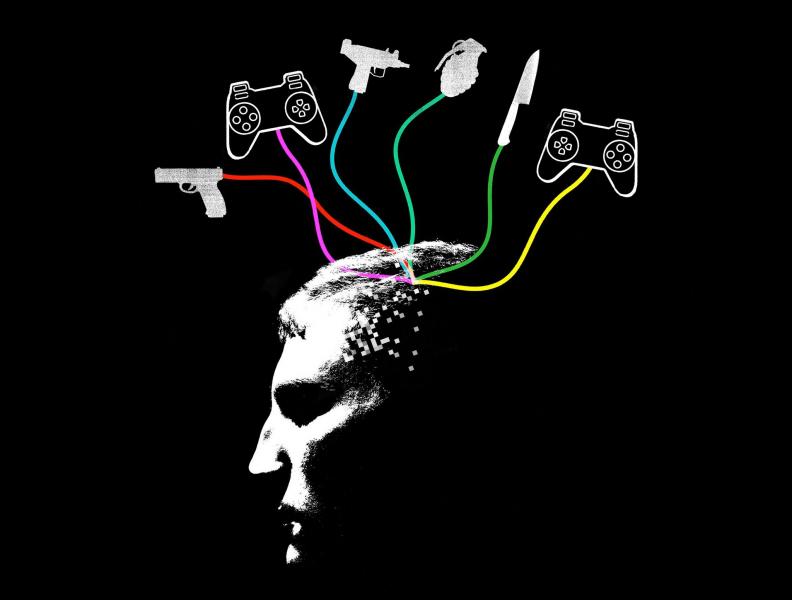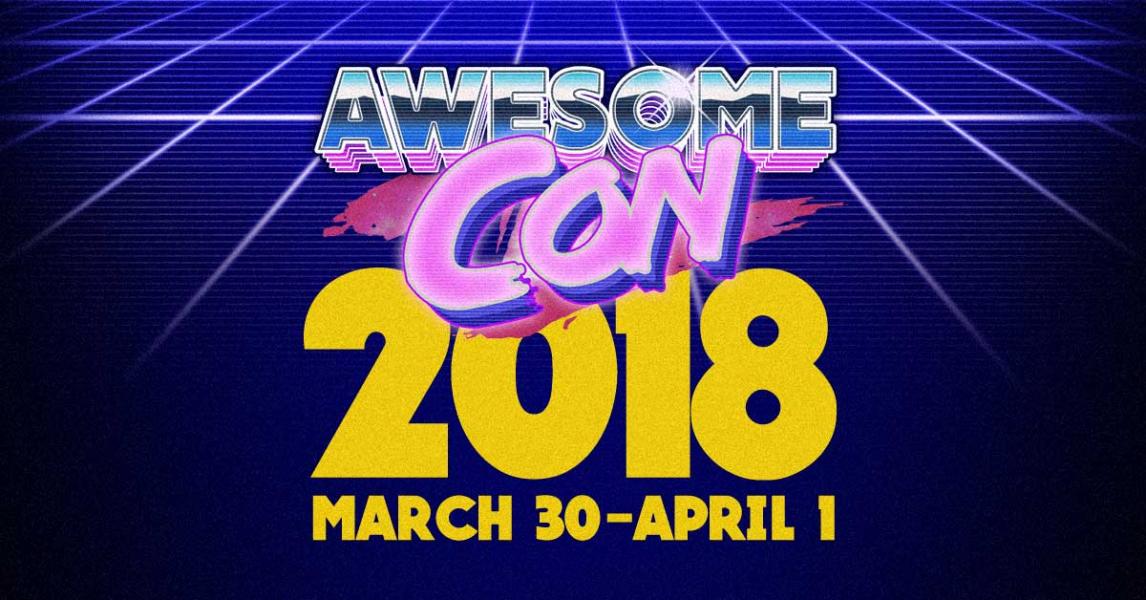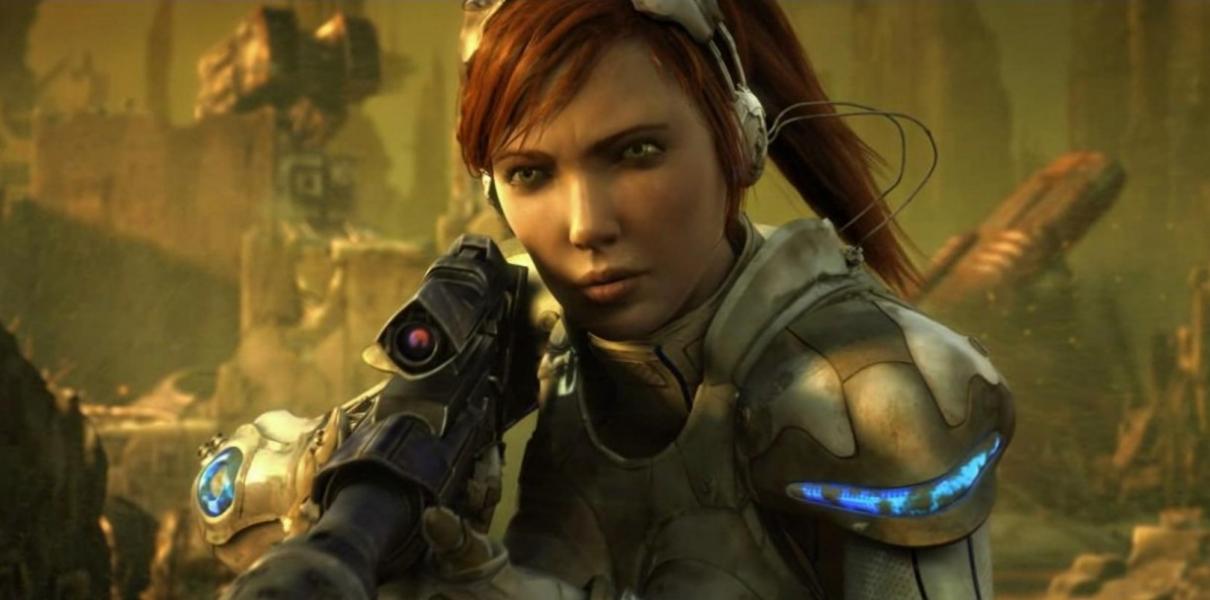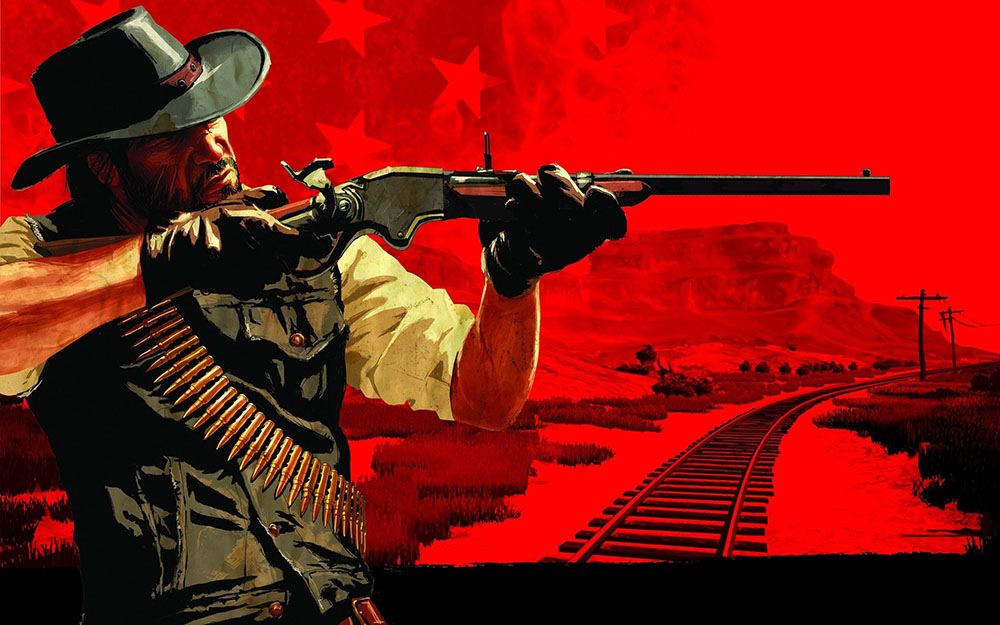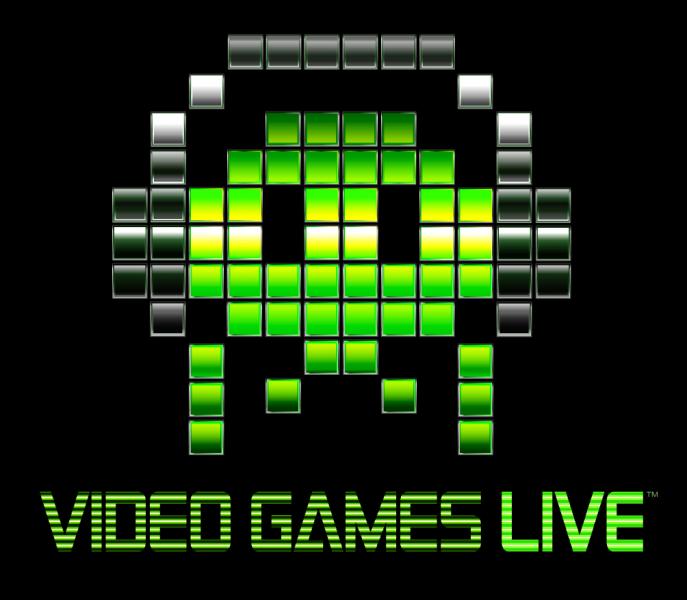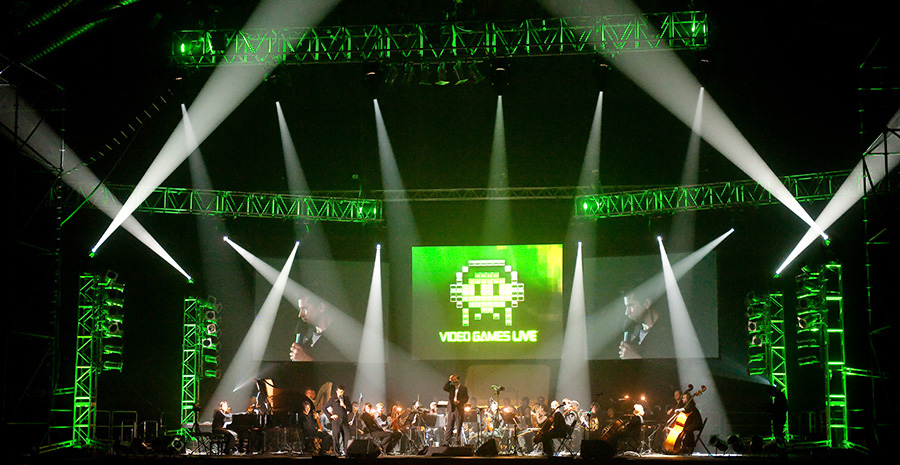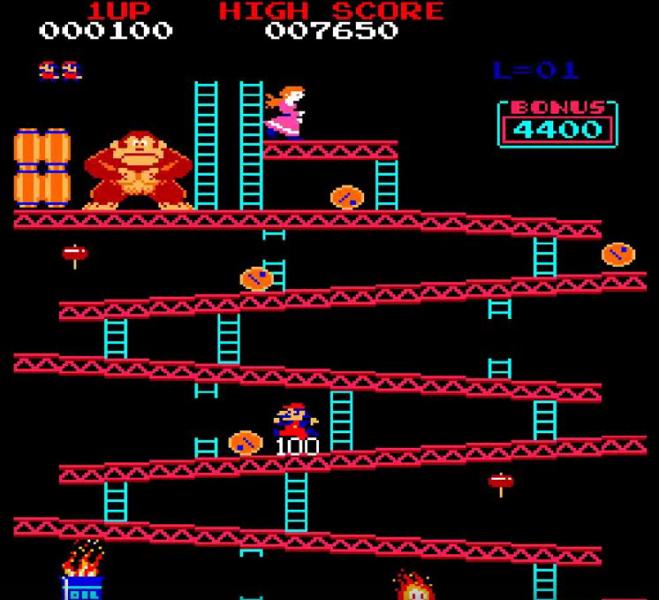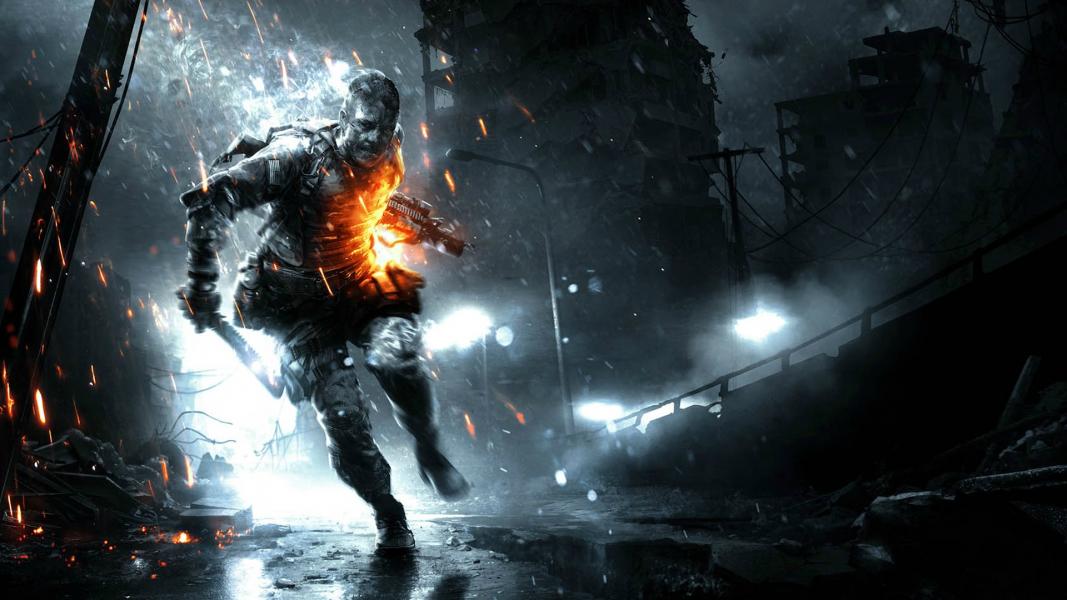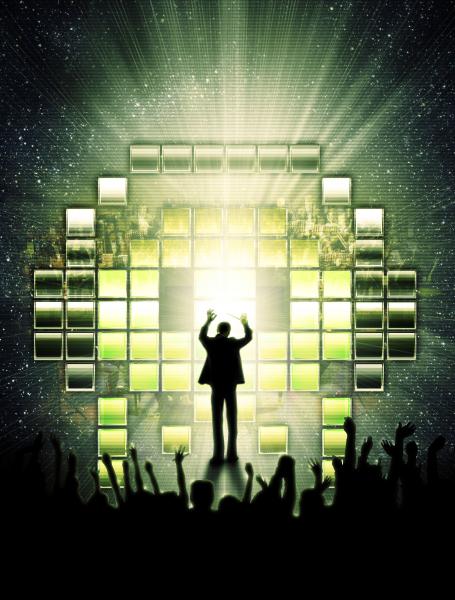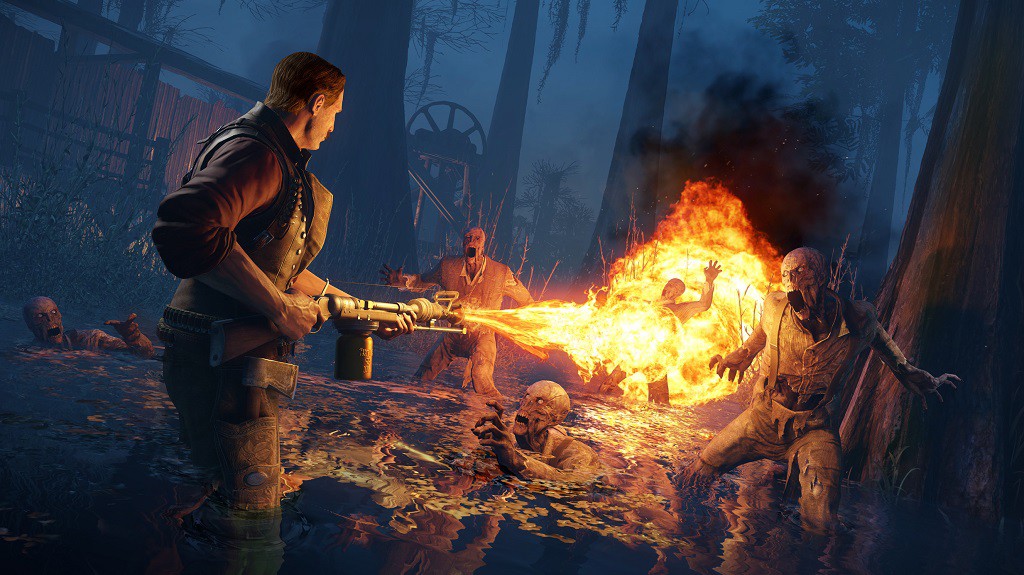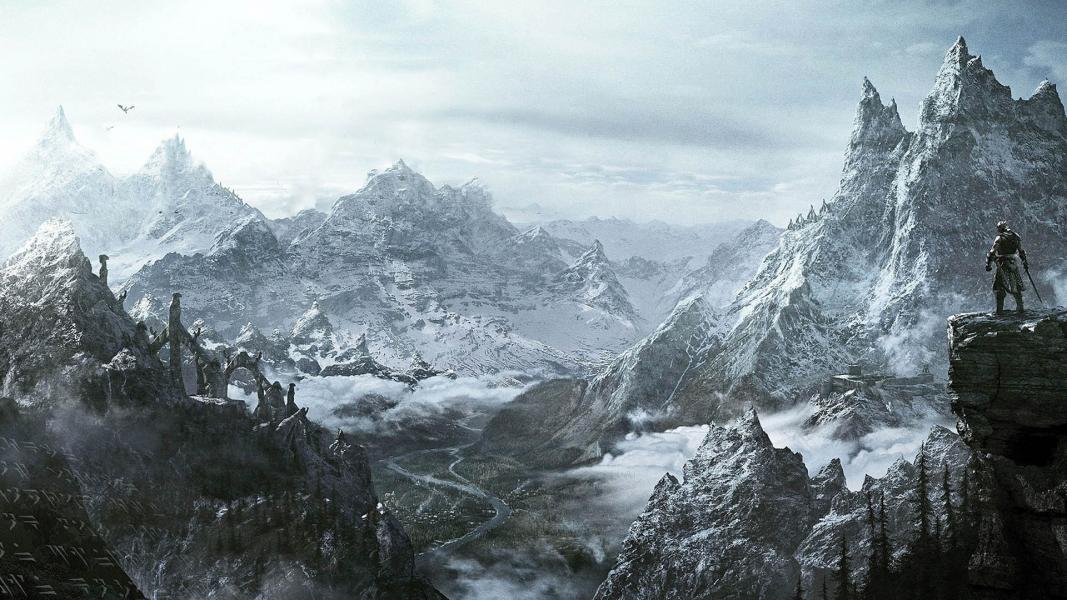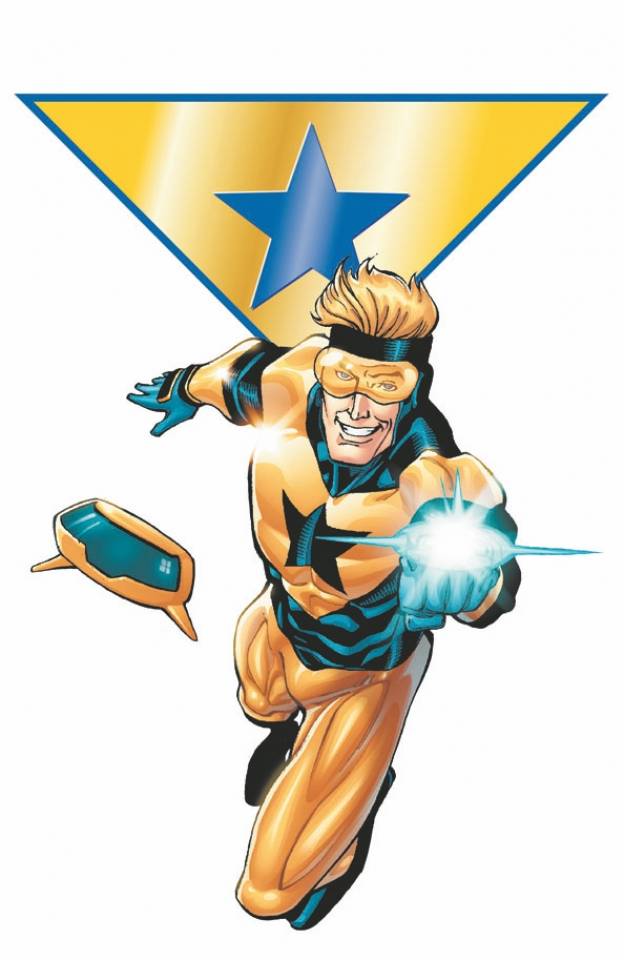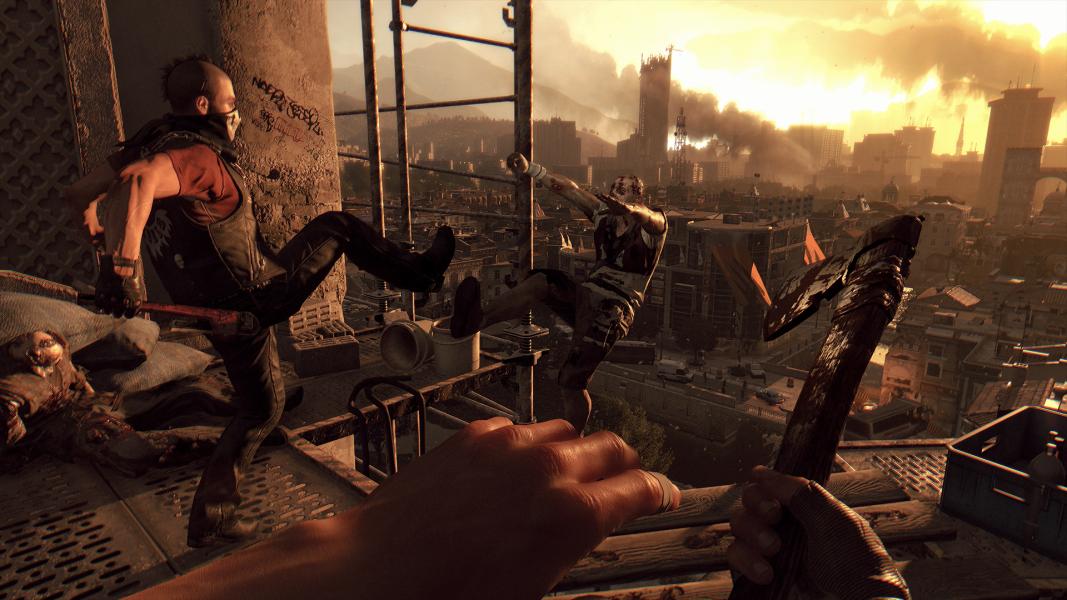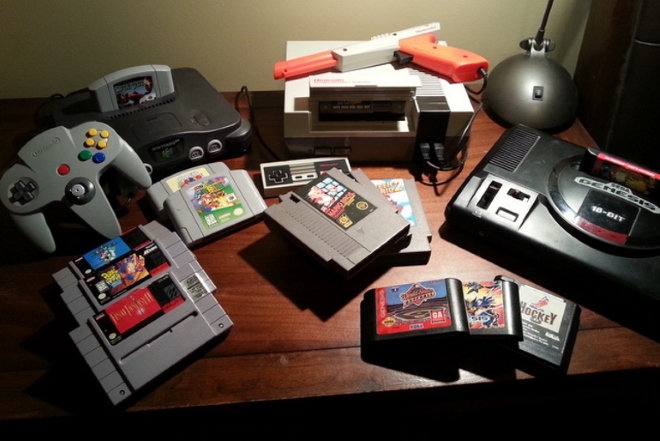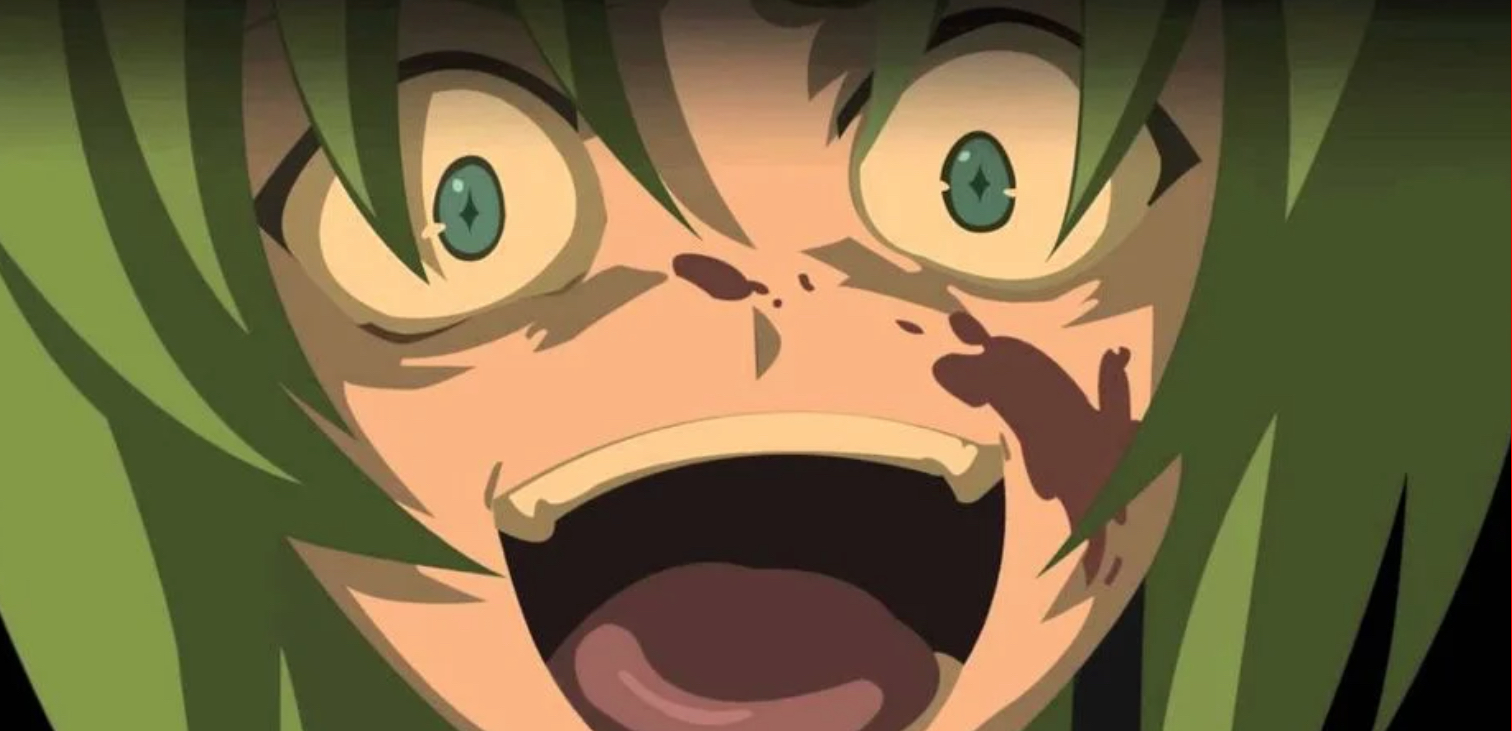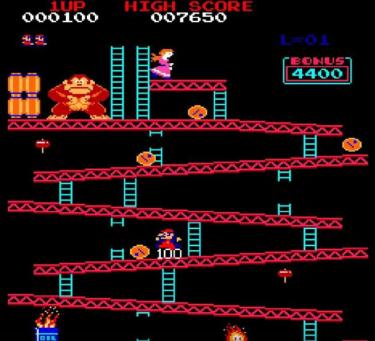
Journey with us through the history of video games!
The video game has a long and storied history. From its humble beginnings as a primitive lightshow, to a titan of an industry serving as a vanguard of creative genius and technological innovation, video games march steadily onward into a promising future where anything is possible.
Join us, then, as we voyage through video gaming’s epic tale, in this article we’ve called The History of Video Games: 11 Interesting Facts You Didn’t Know.
1. 1940 – 1959:
The Prehistory of Video Games
Yes, it’s true. The ancestry of video games can be traced back to the 1940s.
In 1940, nuclear physicist Edward U. Condon built the Nimatron. This primitive computer machine played Nim, which is a simple game that tasks players with avoiding selecting the last matchstick. The Nimatron proved very popular and was played by thousands.
In 1952, as part of his analysis of the interaction between humans and computers, Alexander S. Douglas created OXO for the University of Cambridge’s computer, Electronic Delay Storage Automatic Calculator (EDSAC). This was a simple game of tic-tac-toe.
1954 saw the programming of the first blackjack game for the IBM-701.
The U.S. military’s interest in video games began in 1955, when they developed the war game Hutspiel, in which players took NATO and Soviet sides, then battled each other for supremacy.
In 1958, physicist Willy Higinbotham developed Tennis for Two. This was a table tennis game that was played using an analog computer and an oscilloscope. Because it was built purely for its entertainment value, many historians consider Tennis for Two the first true video game. It would lay the foundation for a more well-known future video game: Pong.
Because Tennis for Two was meant to be played by more than one player, it was also the first multiplayer game.
2. 1960 - 1969:
Spacewar!, the Console Prototypes
The 1960s marked the era when developers started experimenting with the kinds of experiences that computer games can explore.
1962 saw a Massachusetts Institute of Technology (MIT) student, Steve Russell, creating the first interactive, digital, computer-based game – a science fiction title called Spacewar!. It would be distributed to many computer labs across the nation. But because computers were expensive, cumbersome, and primitive in those days, few failed to see the commercial potential of such games.
Meanwhile, the U.S. military would continue their flirtation with video games, creating a war simulation known as Simulation of Total Atomic Global Exchange (STAGE).
In 1964, John G. Kemeny of Dartmouth introduced the high-level programming language BASIC to students, allowing them to easily create their own computer games.
In 1966, Ralph Baer, an engineer working for Sanders Associates, proposed the concept of developing interactive games that can be played on a television. The following year, Baer and his team successfully created the prototype console: the Brown Box. This machine allowed users to play games they designed – including a tennis game and a shooting game that incorporated the handling of a toy gun – using a television. In 1968, Baer patented his creation, paving the way for the next decade of early video game history.
In 1968, Doug Dyment coded a text-based game called The Summer Game, which tasked players with managing resources and land. It was the precursor to construction and management simulations such as SimCity.
3. 1970 - 1974:
The First Mainframe Computer Games, The First Generation Home Consoles, the First Arcades, the Advent of Video Game Commercialization
The early 1970s was all about firsts: the first home entertainment systems, the first arcade games, and the first games for mainframe computers. This was also the time when people were starting to recognize video games’ commercial possibilities.
In 1970, Atari’s future founders, Nolan Bushnell and Ted Dabney, built an arcade version of Steve Russell’s Spacewar! The result was the 1971 release of the very first arcade game, Computer Space.
Computer gaming was a different story. As computers became more affordable, and literature devoted to computers and program compilations emerged, people were able to share software more readily across the US. Consequently, computer games created by college students saw widespread distribution, influencing fledgling developers to further experiment with the medium.
Because computer terminals lacked the capacity to display complex visuals, however, mainframe computer games could not focus on the fast-paced, real-time action of arcade games. The gameplay of the earliest computer games therefore centered on strategy, tactics, and puzzle-solving.
For instance, in 1971, Don Rawitsch, Bill Heinemann, and Paul Dillenberger created the iconic simulation of pioneer life, The Oregon Trail – a game the Minnesota Educational Computer Consortium (MECC) would later produce and distribute across the U.S. Other good examples would be 1971’s Star Trek by Mike Mayfield, and 1972’s hide-and-seek title Hunt the Wumpus by Gregory Yob.
Then, in 1972, Magnavox rebranded and launched Ralph Baer’s creation as the Magnavox Odyssey, which would become known as the world’s first home video game entertainment system. It cost $100. It was only moderately successful with the public, but it did lay the groundwork for home video game consoles. The Magnavox Odyssey and its competition would make up the first generation of home consoles, and would also spark the earliest console wars.
The first strategy game, Invasion, was released for the Magnavox Odyssey. It played like the board game, Risk.
Bushnell and Dabney founded Atari in 1972. Not content with Computer Space, they created the now legendary arcade table tennis game, Pong. It was so successful that the machines didn’t have enough space to hold all the quarters players were feeding them.
The very first video game tournament was held at Stanford University in 1972. The game was Spacewar!.
In 1973, David Ahl’s 101 BASIC Computer Games was published with several games, such as a war game called CIVILW, and a game called MUGWMP where players had to find monsters in a grid. Another game, called HMRABI, or Hamurabi, put players in the shoes of a Sumerian king in the ancient world. This text-based construction and management simulation was an updated version of 1968’s The Summer Game by Doug Dyment.
Then, in 1974, Steve Colley, Greg Thompson, and colleagues created the first first-person shooter computer game: Mazewar. It was also the first game to introduce players to a graphic virtual universe, and the first networked, online video game, allowing players to interact with each other in a virtual world courtesy of the precursor of the Internet, the ARPAnet. As such, it would serve as the precursor to massively multiplayer online role-playing games (MMORPGs).
4. 1975 - 1979:
The Second Generation Home Consoles, the Rise of Atari
The mid to late 1970s witnessed increased video game commercialization and Atari’s rise to prominence.
In 1975, Atari launched the home version of table tennis game Pong through Sears. 150,000 units were produced, which Sears sold exclusively. It proved an extremely popular Christmas present that same year.
1975 was the year William Crowther created the text-based computer game Adventure. In 1976, Don Wood launched his own version of the game. Taking inspiration from the tabletop roleplaying game, Dungeons and Dragons, the game had players exploring a treasure-filled cave. In turn, it would later inspire 1977’s Zork, and therefore serve a pivotal role in the development of the roleplaying game genre of video games.
Some of the earliest role-playing games (RPGs) for computers were 1975’s pedit5 and dnd, and 1976’s Dungeon.
The first fighting game was released in 1976. It was an arcade title called Heavyweight Champ.
1976 also saw the launch of the first adventure game, the text adventure game known as Colossal Cave Adventure.
In 1976, two companies unveiled their own home video game entertainment systems. For Coleco, it was the Telstar, which cost $50. For Fairfield Semiconductor, it was the Video Entertainment System (VES), a console into which players inserted interchangeable cartridges to play games. It was later renamed as the Fairchild Channel F – the first cartridge-based home console. It cost $169.95
In 1977, Atari launched its own cartridge-based machine, the Video Computer System, also known as the Atari 2600. It cost $200. This iconic home console featured swappable cartridges, a joystick, colored video games, and other technological innovations. It proved extremely successful, making gamers of millions of ordinary Americans for the first time in history. The proliferation of Atari 2600 and its competitors would spark the onset of the second generation of home video game consoles.
1977’s Zork became popular on the ARPANET.
Inspired by Zork, a college student in the UK named Roy Trubshaw created a multi-user game which he called MUD, or Multi-User Dungeon. This was a text-based multiplayer virtual world in which players interacted with each other in real-time. It inspired several MUD-type games, which in turn would play a significant role in the development of MMORPGs.
In 1978, arcades in Japan were invaded by Taito’s beloved classic, Space Invaders. It was a rousing success. Midway brought the arcade game to the U.S. to similar fanfare. Space Invaders was the first arcade game with the ability to keep track of and display players’ top scores.
Atari released another arcade classic, Asteroids, in 1979. It would be the first game that enabled high scoring players to input their initials – in the form of three characters of their choice – in the system.
Nintendo released the arcade shooter Radar Scope in 1979. It was innovative in that in featured a third-person perspective. Games like Radar Scope would eventually inspire the third-person shooter genre.
5. 1980 - 1982:
The Golden Age of Arcade Video Games, the Emergence of the Mascots
The early 1980s were interesting times indeed for video gaming. Gamers were pouring millions of dollars into arcade machines, the Atari 2600 faced stiff competition, and the burgeoning popularity of games meant that each title needed an identity to separate itself from its competitors more than ever – which gave rise to the first video game mascots.
In 1980, Pac-Man was released in arcades worldwide. Created by Toru Iwatani of Namco, the game was an instant hit, and solidified its titular character’s place in gaming history as the first original video game mascot. That same year, Pac-Man would be unveiled for the Atari 2600, making it the first arcade title to have a home console port.
In 1980, Mattel debuted its own home console, Intellivision, which retailed for $299. It would become the Atari 2600’s first true competitor.
1980 also saw the launch of the first 3D game ever, Battlezone. In this arcade game, players battled tanks in a monochromatic, polygonal world.
1980’s arcade game, Space Panic, was the first platform game ever created.
Meanwhile, on computers, RPGs were on the rise with the release of pioneering classics such as 1980’s Akalabeth: World of Doom. This would eventually mutate into Richard Garriott’s revered Ultima series.
In 1980, college students Michael Toy and Glenn Wichman created the game Rogue for Unix systems. This dungeon crawler featured procedurally generated areas and items, and would go on to inspire the roguelike genre and future action RPGs like Diablo.
The first historical war game for personal computers was released in 1980 – Strategic Simulations’ Computer Bismarck. The early 1980s would see a proliferation of strategy games, with many exploring various subjects and gameplay features.
The first entry in the Ultima series, Ultima 1: The First Age of Darkness, was released for personal computers in 1981.
Atari held the Space Invaders Championship competition in 1981. Attracting some 10,000 participants from all over the US, it was the first massive video game tournament in history. Competitive gaming would become more common as a result.
The first stealth game was released by Sega in 1981. It was an arcade game called 005, in which players assumed the role of a spy who had to deliver a briefcase to a helicopter without getting caught. This meant hiding in boxes and evading flashlights.
1981 was the year Electronic Games – the very first magazine dedicated entirely to video games – was born.
Nintendo would surprise the world in 1981 with the stellar success of Donkey Kong. This arcade game produced two more popular mascots in the form of the eponymous Donkey Kong, and Jumpman, whom the world would later know as Mario. Both characters were created by the now legendary Shigeru Miyamoto.
Utopia, a strategy game for the Intellivision, was the first true construction and management simulation game.
In 1981, a Pac-Man-like game called Ms. Ladybug was released. She was gaming’s first female protagonist.
Later in 1981, Ms. Pac-Man was released, replacing Pac-Man as the top-selling title in the history of arcade gaming. Ms. Pac-Man would become gaming's most important early heroines.
In 1982, the console war heated up when Coleco debuted the Colecovision. This home console was more powerful than the Atari 2600, and delivered a truer arcade experience than its competition. To meet this new threat head-on, Atari launched the Atari 5200 later in the same year.
1982 would be the birth of another renowned computer RPG franchise, Wizardry.
Japan would create its very first RPGs, one of the earliest being The Dragon and the Princess for personal computers, in 1982.
1982 was also the year personal computers had the first adventure game with graphics in the form of Mystery House.
6. 1983 – 1985:
The 1983 Video Game Crash, the Coming of Gaming’s Savior: Nintendo
While 1983 to 1985 would end up becoming the most infamous years in the medium’s history, they would also lead to a glorious new era of video gaming.
1983 was the year the arcade classic Dragon’s Lair became the first game to make use of laser-disc technology. Dragon’s Lair was an interactive animated movie, in which you, a bumbling knight, was tasked with saving a princess.
1983 was also the year the computer game M.U.L.E. took multiplayer to a whole new level. M.U.L.E. allowed competition between four players, who were tasked with managing the economy of their colonies.
In 1983, the 8-bit computer game console, Commodore 64, was released. It was the cheapest and most powerful home console to date. It was extremely successful, selling over a dozen million units in North America. It was inducted into The Guinness Book of World Records as history’s best-selling gaming computer.
Over in Japan, Nintendo launched the hallowed 8-bit home video game system, Family Computer, or Famicom, in 1983. The Famicon would usher in the age of 8-bit consoles, also known as the third generation of home consoles. It cost $199.99.
Despite these leaps and bounds, 1983 would prove the North American game industry’s most notorious year, thanks to what is known as the video game crash of 1983. This was when several video game companies went bankrupt, and the industry was almost destroyed. The crash was caused by several factors, one of them being the release of far too many competing home consoles, and games of inferior quality, such as 1982’s infamous E.T.: The Extraterrestrial for the Atari 2600.
Other reasons for the crash included stiff competition from personal computers as gaming systems; publishers losing control over their game developers, which led to an overabundance of games being released – many of which were shoddy clones of popular titles; and inflation. It would take two years for the game industry to recover.
In 1983, the first Japanese role-playing game (JRPG) was created. It was called Bokosuka Wars, which incorporated role-playing and real-time strategy elements. It would inspire the genre that would later be known as the tactical RPG. It would also inspire the action RPG genre.
Japan would create more JRPGs for personal computers between 1983 and 1984, such as Panorama Toh, and Dragon Slayer. Dragon Slayer was a dungeon crawling game where the hack and slash action occurred in real-time. As the first ever action RPG, it would go on to inspire an entire subgenre that would one day give birth to Diablo.
1983’s Reach for the Stars was the first 4X grand strategy game.
Alexey Pajitnov, a mathematician from the USSR, created the esteemed puzzle game, Tetris, in 1984. It was the first time the USSR exported entertainment software to the US. It was played on the IBM PC and Commodore 64.
Adventure games for personal computers were improving visually and story-wise. 1984 saw the launch of King’s Quest, which would proceed to spawn numerous successful sequels, not to mention clones.
The 1984 arcade game Karate Champ began to popularize the fighting game genre.
1984’s award-winning The Lords of Midnight combined strategy, war gaming, and adventure elements.
In 1985, the Famicom finally found its way to the U.S. It was renamed the Nintendo Entertainment System (NES), and helped revitalize the dying North American game industry. Its Deluxe Set, which came with two controllers, a light gun, and the games Duck Hunt and Gyromite, cost $299.
That same year, Super Mario Bros. was released for the NES. It revolutionized the side-scrolling platformer and made a cultural icon of its protagonist, Mario. Mario would go on to become the most recognizable and beloved video game mascots in history. Countless cloned would also be eventually created in an attempt to unseat Mario from his throne, but so far, none have succeeded to do so. With over 40 million copies sold, Super Mario Bros. would also become the fifth best-selling game in history.
7. 1986 – 1992:
The Nintendo-Sega Console War, the 16-Bit Invasion
The years 1986 to 1992 were a wondrous time for video games for home consoles and personal computers.
On computers, RPGs entered a Golden Age with games like 1985’s Bard’s Tale, 1986’s Might and Magic Book One, as well as several entries into the aforementioned Ultima and Wizardry series.
In 1986, Sega debuted the 8-bit Sega Master System. It would serve as the Nintendo Entertainment System’s direct competition. A heated war between the two giants would ensue – one that would last more than a decade!
In 1986, The Legend of Zelda was released for the NES, and would become one of the most important action-adventure games of our time.
In an attempt to stay relevant in the industry, Atari unveiled the Atari 7800 in 1986. It was priced at $140.
1987 would see the release of the very first Final Fantasy game. Contrary to developer Square’s expectations, the game did extremely well both critically and commercially. It would go on to spawn a multitude of equally acclaimed sequels, spin-offs, and clones. The success of the franchise would further popularize JRPGs, ensuring itself a global audience for many years to come.
1987 was the year LucasArts released their first point-and-click adventure game, Maniac Mansion.
1987’s Street Fighter was the first fighting game to introduce command-based special attacks.
Metal Gear, by legendary creator Hideo Kojima, was released in 1987 for MSX2, then for the Nintendo Entertainment System in 1988. This action-adventure title starred series hero Snake, who had to infiltrate enemy facilities using stealth.
In 1988, a post-apocalyptic computer game called Wasteland was released. This would later inspire the seminal Fallout franchise.
1988 was when the first game in the John Madden Football series was released for personal computers. Its realism was highly praised, and would cement the franchise’s place in history as one of the best-selling sports video game brands in the game industry.
Herzog Zwei, the first real-time strategy (RTS) game, was released in 1989 for the Sega Genesis. Because of its RTS mechanics, it was also the early precursor of the multiplayer online battle arena. (MOBA)
In 1988, BioWare’s fantasy RPG Baldur’s Gate was released for the PC. The game was critically lauded for its gameplay, exploration, character development, dialogue options, and visuals, and was responsible for reinvigorating the computer RPG genre.
In 1989, Peter Molyneux’s Populous was released for personal computers. Many regard it as the first god game.
Will Wright’s SimCity was launched in 1989. Its huge success would put the city building and construction and management simulation genre on the map, and generate several sequels, spin-offs, and clones.
1989 saw Nintendo’s release the Game Boy, the first cartridge-based handheld console to achieve worldwide success. The Game Boy, which cost $89.95, came bundled with Alexey Pajitnov’s Tetris, which popularized both the game and the console. The Game Boy, and its 1998 update, the Game Boy Color, would, in combination, sell over 118 units globally, making them the third best-selling consoles in history.
Later that same year, Atari launched the handheld gaming device Lynx for $189.99. Unlike the Game Boy, the Lynx was in color. This feature was its major selling point.
Perhaps the most important development on the home console front was the arrival of the fourth generation consoles, or the 16-bit systems. The first among these was the TurboGrafx-16 in 1989. The TurboGrafx-16, which cost $199.99, was also the first console to use compact discs in order to run games.
That same year, Sega introduced the Genesis, or Mega Drive, to the world, and for the first time since it entered the gaming industry, Nintendo found itself losing a considerable portion of its market to its competition. The Genesis cost $189.99.
Nintendo would fight back, however, releasing its own 16-bit home console, the Super Nintendo (Super NES), in 1990. It also cost $199.99.
Not one to surrender, Sega responded to Nintendo’s move by introducing its own video game mascot, the anti-Mario, Sonic the Hedgehog, in 1991. Sonic’s edgy attitude and face-burning velocities made him an instant hit and a popular alternative to Mario. The Nintendo-Sega war was at its peak.
Sega also launched its own handheld, the Sega Game Gear, in 1991. It cost $149.99, and was also in color.
The spectacular success of 1991’s arcade fighting game Street Fighter II was responsible for the fighting game explosion of the 1990s. Along with future hits such as The King of Fighters and Mortal Kombat, it would also rejuvenate interest in arcade games.
In 1991, the first true MMORPG was released, allowing over 90 players to interact with each other in online and in real-time in a vast, graphical open world. The game was Neverwinter Nights.
That same year, Sid Meier’s Civilization was introduced to the gaming world. An award-winning 4X strategy game, it is considered by many to be one of the most important and influential strategy games of all time. It would go on to spawn numerous equally profitable, critically lauded, and ridiculously addicting sequels and spin-offs.
SNK released its own home console, the Neo Geo, in 1991. It cost between $399.99 and $699.99.
Dune II popularized the RTS genre in 1992. This would stimulate the development of some of strategy gaming’s most phenomenal series, such as Warcraft, Command & Conquer, and Total War.
Ultima Underworld: The Stygian Abyss, a spin-off of Richard Garriott’s Ultima series, was released in 1992. This critically acclaimed PC game was a trailblazer, being the first RPG to feature a first-person perspective in a true 3D environment. It was also the first first-person game that let players move the camera up and down, allowing them to examine the entirety of their surroundings. This RPG masterpiece would inspire future games such as Deus Ex and BioShock.
In 1992, the Infogrames-developed Alone in the Dark was released for the PC. An early example of the survival horror genre, it was also one of the first games to feature polygonal characters over static, pre-rendered backgrounds. It made it to the Guinness World Records as the First Ever 3D Survival Horror Game.
8. 1993 - 1996:
The FPS Boom, Video Game Violence, the 32/64-Bit Machines Cometh
For gaming, the years 1993 to 1996 were replete with profound technological innovations. They were also the years when video game violence caught the attention of everyone from the media to the government.
Starting from the early 1990s, personal computers began making extensive use of CD-ROMS and other graphics and sound-enhancing technologies. This meant games were boasting more sophisticated visuals, and voice acting to give life to their characters.
In 1992, id Sofware’s Wolfenstein 3D, a first-person shooter for personal computers, popularized fast-paced, first-person action. Its violence, however, raised a number of eyebrows, especially among video game detractors.
1993’s Myst was an adventure game for personal computers. It utilized beautiful, pre-rendered 3D graphics. The game would influence many genres, chief among them adventure and puzzle. Myst was also known for its exploration, and for the fact that it wasn’t aimed at children or adolescents, but an older, mainstream audience. For many years, it would remain the best-selling PC game.
Sierra On-Line’s The Beast Within: A Gabriel Knight Mystery was another game that made full use of the new technology of the time. This 1993 game was both a point-and-click adventure and an interactive full motion movie.
In 1993, Sega’s revolutionary arcade title, Virtua Fighter, was the first fighting game to use purely 3D polygonal characters. The game would inspire other studios to develop their own 3D fighters, such as Tekken and Battle Arena Toshinden.
In 1992, Midway’s arcade game, Mortal Kombat, offered a gritty and unprecedentedly bloody alternative to Japan’s more colorful fighting games such as Street Fighter II. While Mortal Kombat was an astounding success, its ridiculous levels of violence unsettled everyone from parents to politicians. A probe into video game violence began, with at least one US senator lobbying for the banning of violent video games altogether.
It didn’t help that 1993’s Doom, another first-person shooter for personal computers, was just as ultra-bloody. It only gave the critics of video game violence more ammunition with which to attack the medium. Despite the vitriol hurled at Doom, the game was an extraordinary success, and caused an explosion of first-person shooters – many of which were Doom copycats.
In 1993, gamers witnessed the launch of the 32-bit 3DO Interactive Multiplayer, which cost between $399 and $699.
Later that same year, the first 64-bit machine, Atari’s Jaguar was released. It cost $249.99.
Though both the 3DO and Jaguar were responsible for ushering in the fifth generation of home consoles, they were not as successful as other fifth generation video game systems.
One of the biggest changes brought about by these fifth generation home consoles, however, was the move from the use of cartridges to CDs to run games. Games also started using more 3D polygonal graphics.
Then, in 1994, two 32-bit console giants were born: the Sega Saturn, which cost $399.99, and the Sony PlayStation, which cost $299.99 when it was launched in the US a year later. The PlayStation was Sony’s first foray into the gaming industry. Its unexpected, phenomenal success would be a prelude to Sony’s rise to the top of the gaming industry food chain. The PlayStation would eventually sell more than 102 million units worldwide.
The US Senate’s investigation of video game violence led to the creation of the Entertainment Software Rating Board (ESRB) in 1994. For the first time in history, the packaging of games were labeled with age ratings to prevent children from playing titles with mature themes, such as violence and sex.
Blizzard Entertainment released the RTS classic, Warcraft: Orcs & Humans in 1994.
In 1995, Nintendo launched Nintendo 64 in Japan. In 1996, the console entered the US gaming market for the competitive price of $199.99. The success of both the Nintendo 64 and Sony PlayStation would mark the beginning of the end for the Sega Saturn.
1996’s Super Mario 64 would revolutionize 3D action-adventure and platforming.
1996’s Tomb Raider for consoles and personal computers introduced gaming heroine Lara Croft to the world. While the title was lauded for its exciting gameplay and Lara Croft herself was elevated to the status of one of the most important video game characters ever made, many critics cited her as evidence of sexism in the industry. Tomb Raider was also responsible garnering interest in the third-person shooter genre.
Masaya Matsuura’s PaRappa the Rapper was released for the PlayStation in 1996 to become one of the most influential music rhythm games.
Blizzard released Diablo in 1996. Though not the first action RPG, its addictive “kill, loot, and level up” gameplay, gorgeous graphics, dark story, grim atmosphere, and ominous soundtrack made it a force to be reckoned with. It certainly helped that it boasted immense replayability courtesy of its procedurally generated dungeons and items. It raised the genre to new heights, and many clones would attempt to replicate its simple yet effective formula. It would also become one of the best-selling games of all time with over 30 million copies sold.
Blizzard also launched Battle.net, an online digital distribution platform, was connected directly to Diablo, making it one of the game’s biggest selling points.
Capcom released Bio Hazard, or Resident Evil, for the PlayStation. Its success would jumpstart the modern era of survival horror gaming.
9. 1997 – 2001:
The MMORPG Evolution, the RTS Escalation, the Arrival of Xbox, the Fall of Sega
The years from 1997 to 2001 saw the beginnings of the modern MMORPG, and the rise and decline of console titans.
1997’s Final Fantasy VII for the PlayStation was the first 3D Final Fantasy game. Thanks to its amazing world, characters, gameplay, and music, it was an outstanding success, selling over 2 million copies in Japan in just three days. It boosted the popularity of JRPGS, the franchise, and developer Square to extreme heights, and remains a beloved title to this day. PlayStation also reaped the rewards of its success, becoming the best-selling console of the time with over 20 million units sold.
Also in 1997, Ultima Online was released for the PC. It was the first successful MMORPG. Despite its popularity, and its role in initiating the boom of MMORPGs, it was a critical failure. It’s worth noting that Ultima series creator Richard Garriott was responsible for coining the term "massively multiplayer online role-playing game," or MMORPG.
As mobile phones grew more sophisticated and powerful, the late 1990s to the early 2000s sparked a new era of mobile gaming. One of the most popular was 1997’s Snake, which could be played on the Nokia 6610.
In 1998, Sega’s Japanese release of the Dreamcast started the sixth generation of home video game consoles, also known as the 128-bit era. The Dreamcast cost $199.99.
Blizzard released its military science fiction RTS game, StarCraft, to monumental success. Its use of three unique and asymmetrical yet balanced factions was revolutionary. StarCraft inspired countless copycats, causing an escalation in the number of RTS games produced for the PC. It would also prove extremely popular in South Korea, where it became a national sport. It is safe to say that StarCraft was hugely responsible for popularizing eSports.
StarCraft was released with game-editing tools, which allowed players to mod the game. One such mod was the well-received Aeon of Strife (AoS), which laid the foundation for the MOBA genre.
In 1998, Valve’s sci-fi first-person shooter Half-Life was released to critical acclaim and massive commercial success. It was praised for its innovative features, such as its realistic, seamless, and immersive world; intelligent enemy A.I.; engrossing story whose major plot points were advanced through in-game scripted sequences; gorgeous 3D graphics and sound; and exceptional in-game physics. As one of the most important games ever created for personal computers, it helped develop the first-person shooter into a sophisticated genre capable of telling complex stories and emulating the excitement of real-world gunplay.
1998 was also the year stealth games took center stage. For the PC, there was Thief: The Dark Project, a first-person stealth game set in a dark fantasy world resembling the Industrial Revolution. The game was praised by fans and critics alike, especially for the advanced artificial intelligence of its enemies. It would influence several sequels, and future games like Hitman and Tom Clancy’s Splinter Cell.
Then there was Metal Gear Solid for the PlayStation, which followed the exploits of a soldier tasked with infiltrating a facility swarming with terrorists. It, too, was a great success, and would go on to spawn many sequels. Both games were responsible for the stealth genre’s mainstream popularity, which continues to this day.
In 1998, Konami published GuitarFreaks, an arcade music and rhythm video game which had players using a controller shaped like a guitar. This simulated the experience of playing in an actual band. As it would serve as the foundation for future smash hits such as Guitar Hero and Rock Band, it would go down in history as one of gaming’s most influential music titles.
1998’s arcade hit, Dance Dance Revolution, redefined the music and rhythm video game genre thanks to its technological innovations. It was played by “dancing”: stepping on arrows on a dance pad to the beat of the selected song. In 1999, the game was ported to the PlayStation. People could play the game at home using dance mats.
In 1999, Minh Le and Jess Cliff created a Half-Life mod called Counter-Strike, which pit two teams against each other. It proved so successful that Valve hired the two men to further develop the game. It played a relevant role in the growth of the eSports scene.
In 1999, Yu Suzuki’s Shenmue took the adventure genre to another level by incorporating gameplay elements such as quick-time events, an open world sandbox, fighting game mechanics, and a third-person perspective.
Sony Online Entertainment launched EverQuest in 1999 to become the leading MMORPG of the time.
In 1999, Electronic Arts released Medal of Honor, a first-person shooter for the PlayStation. Set in World War II, its success would jumpstart the military shooter craze.
Konami unveiled Silent Hill, in 1999. As one of the most important modern survival horror games, it helped in the evolution of the genre by focusing on psychological horror instead of the typical schlock horror found in other games.
Sony released PlayStation 2 in the US in 2000. Costing $299.99, it would quickly become the dominant sixth generation console on the market. It would eventually become the best-selling console ever, with over 155 million units sold worldwide.
In order to compete with the PlayStation 2, the price of Sega’s Dreamcast was lowered to $299, and then to $199.99.
Will Wright’s The Sims was launched in 2000 to enormous success. It would eventually eclipse Myst as the top-selling game for the PC. It would also become the most popular game among women.
Nintendo released the GameCube for $199.99 in 2001. An extremely well-received console, it would later sell up to 22 million units globally. That same year, Nintendo launched a new handheld gaming system, the Game Boy Advance for $99.99.
2001 was also the year Microsoft announced its entry in the console war by introducing its own sixth generation console, the mighty Xbox. Costing $299.99, the machine would become one of the best-selling consoles of all time, with over 24 million units sold in its lifetime.
Through Xbox, the military sci-fi first-person shooter Halo: Combat Evolved and its protagonist, the iconic Master Chief, were introduced to gamers for the first time in 2001.
With its failure to surpass the competition, Sega announced the end of its console development days in 2001.
10. 2002 – 2008:
The Creation of Steam, the Online and Handheld Gaming Explosion, the Music Game Madness, the MOBA Revolution
In the early to late 2000s, handheld gaming hit its stride. Online games were becoming huge, thanks in part to the digital distribution platform Steam and a certain Blizzard game. Players were also finding new ways to experience games courtesy of an array of innovative controllers, such as dance mats and “guitars.”
In 2002, the US Army published the PC title America’s Army – a first-person shooter that was both a game and a recruitment tool.
Blizzard unveiled the beloved medieval fantasy RTS, Warcraft III: Reign of Chaos, in 2002. The following year, its equally well-received expansion, Warcraft III: The Frozen Throne was released.
In 2002, Gravity released its MMORPG, Ragnarok Online in South Korea. The game later spread to Southeast Asia, where it became many a gamer’s first real taste of the genre. Its astonishing success opened the doors for many other South Korean MMORPGs in the region.
Activision released Infinity Ward’s military shooter, Call of Duty, in 2003. Some of its technological innovations included having numerous A.I. soldiers and tanks accompany the player in battles. Being part of a computer-controlled army gave the experience authenticity that previous military shooters failed to achieve. Its success would further energize the first-person military shooter genre, and transform Call of Duty into an unrivalled industry giant boasting numerous sequels and spin-offs on a variety of platforms.
Fans would heavily mod Warcraft III. One significant mod was 2003’s Defense of the Ancients (DotA), a game that focused on hero battles and Warcraft III’s RPG elements. DotA’s astronomical success single-handedly popularized the MOBA genre, and was instrumental in the invigoration of eSports.
In 2003, Valve introduced Steam, an online digital distribution service that enabled users to purchase, download, and update PC games. The platform was a success, eventually seeing thousands of game releases and more than 125 million users.
Nokia unveiled its own portable gaming system in 2003 in the form of the N-Gage to tap into the growing enthusiasm for mobile games. It cost between $179.99 and $299.99.
Blizzard’s MMORPG, World of Warcraft, was released in 2004 to incredible financial and critical success. With thousands of quests, numerous unique classes, vast and beautiful worlds to explore, and mythic lore, the game hooked Blizzard devotees and made millions of new fans. It eventually made the a Guinness World Record for popularity among MMORPG fans, earned Blizzard more than 10 billion dollars, and boasted over 100 million player-created accounts. At its peak popularity, it had around 12 million subscribers. World of Warcraft caused an MMORPG explosion, with a surge of developers creating similar games in an attempt to match its success.
In 2004, Nintendo launched the Nintendo DS, officially bringing about the seventh console generation. The Nintendo DS was a portable console device boasting two screens: a touchscreen which could be interacted with using a stylus, and a screen purely for displaying visuals. The system was hugely profitable, ensuring that Nintendo remained the dominant force in the handheld market. Today, it remains the second best-selling game console of all time with over 154 million units sold.
In 2005, Sony entered the handheld gaming industry with the release of the PlayStation Portable (PSP). A popular console, it would eventually sell over 82 million units.
Microsoft’s launch of the Xbox 360 in 2005 was the biggest reveal of the seventh generation of home consoles, yet. Costing between $299.99 and $399.99, it would eventually sell over 84 million units.
Publisher RedOctane released developer Harmonix’s music rhythm game Guitar Hero for the PlayStation 2 in 2005. Like GuitarFreaks, it used an electric guitar-shaped controller. A marvelous success, it launched a series that would eventually make over $2 billion, and made rockstars of wannabe guitarists worldwide.
Tetris would find its way to the PlayStation Portable, as well as Blackberry, iOS, and Android devices. It would become the best-selling video game of all time with over 100 million copies sold around the world.
In 2006, Nintendo released the Wii. It was priced between $199.99 and $249.99. This revolutionary home console used motion-detecting controllers which allowed more physically active interactions with games. Its stable of games also appealed to a broader audience, enthralling even the most casual of gamers all over the world. Despite being graphically inferior to its contemporaries, its strengths made it a hit. At 101 million units sold, the Wii remains one of the best-selling consoles in history. In the following years, Nintendo’s competition would try to imitate the Wii-mote, but they would fail to capture the charm of the original.
2006’s Wii Sports, which was bundled with the Wii, would one day become the second best-selling game in history, with over 82 million copies sold globally.
2006 was also the year Sony launched the PlayStation 3. Though it cost between $499.99 and $599.99, it would go on to sell more than 83 million units.
In 2007, the Harmonix-developed music rhythm game, Rock Band, was published by MTV Games. It would be end up a resounding success like Guitar Hero, and also prompt the development of several sequels. That enthusiasm for guitar-based music games was at its zenith.
BioWare’s sci-fi RPG Mass Effect was released in 2007. It did remarkably well, and was praised for its story, characters, and its focus on the power of player choice to shape the narrative and game world.
Rockstar Games’ open world action-adventure title, Grand Theft Auto IV, was an instant hit when it was released in 2008. On the day of its release, it earned a whopping $310 million. Within a week, it sold over 6 million copies and made $500 million. Though it was hailed as one of the most important video game titles of all time, it was criticized for its depiction of crime, violence, and alcohol abuse.
11. 2009 – Present:
The Casual and Mobile Gaming Surge, the Rise of Indie Gaming, the eSports Explosion, and the Advance of Technological Innovation
Video gaming’s recent history is marked by technological marvels, the rise of casual, mobile, and indie gaming, the eSports boom, and scandals.
In 2009, crowdfunding platform Kickstarter was introduced to the world. Because it helps people raise funds for creative projects, it has become a great boon to game developers. As such, Kickstarter and other crowdfunding programs would play a role in the rise of indie gaming.
The internet, digital distribution platforms such as Steam, and the ready availability of game development tools also led to the rise of indie gaming from the late 2000s onwards.
Popcap Games released the tower defense game Plants vs. Zombies for the PC in 2009. This smash hit would eventually make its way to mobile devices, and would help usher in the rise of casual and mobile gaming.
Swedish indie programmer Markus “Notch” Persson developed the sandbox construction game, Minecraft. It was first introduced to the public in 2009, and was very well-received.
In 2009, Zynga developed the casual farming simulation game, Farmville, for social network site Facebook. It was extremely popular, even among people who weren’t ordinarily into video games. Because of the success of Farmville and its competition (such as Candy Crush Saga and Bejeweled), there would be a glut of casual games for social network sites.
The casual gaming craze would make its way to mobile devices, such as iOS and Android phones and tablets. One of the most popular games of 2009 was Angry Birds. Despite only costing $0.99, the game would eventually be downloaded by over 2 billion people worldwide. Its profitability would pave the way for an Angry Birds franchise whose merchandise now spans sequels, toys, and even an upcoming movie. Also, like Farmville before it, Angry Birds and its equally successful competition inspired the development of countless titles for mobile gadgets.
While some casual games were sold for extremely low prices, others opted for the extremely lucrative free-to-play model. This method of acquiring money from players, which relied on in-game sales of virtual items, eventually became widespread on PC and console titles, as well.
Capcom launched Street Fighter IV for home consoles in 2009. Considered one of the best games in recent history, it helped revive mainstream interest in fighting games.
Riot Games unveiled its MOBA, League of Legends, in 2009. It would go on to become one of the most important eSports games in recent history, with an extensive competitive scene and millions upon millions of fans worldwide. Various international tournaments continue to be held yearly with millions of dollars on the line.
Naughty Dog unveiled its action-adventure third-person shooter, Uncharted 2: Among Thieves, for the PlayStation 3 in 2009. A huge success, it was praised for its amazing graphics, story, complex and exciting set pieces, and technological innovation. It continues to serve as an excellent example of the cinematic quality of modern video games.
In 2010, Sony introduced the PlayStation Move, a motion-sensing system that allowed players to interact with games by moving their entire bodies, therefore doing away with the need for traditional controllers.
That same year, Microsoft debuted its own motion-control device, the Microsoft Kinect.
In 2011, Markus “Notch” Persson’s game company, Mojang, officially released Minecraft for the PC. It was an overwhelming success, and by the end of 2011, its registered users numbered 16 million, and its 4 million sales would amount to more than $33 million. It would later be released on consoles, as well, where it would continue to remain extremely profitable. It would eventually become the best-selling title for the PC, and the third top-selling video game in history, with over 70 million copies sold across the PC and consoles. Thanks to Minecraft’s success, the indie gaming movement was also in full swing.
With the release of the handheld gaming system Nintendo 3DS in 2011, Nintendo was the first to enter the eight generation of home consoles. It cost $249.99.
That same year, PlayStation would follow suit with its own portable console, the PlayStation Vita. It cost between $199.99 and $299.
In 2011, Bethesda’s fantasy RPG, Elder Scrolls V: Skyrim, was launched. Its enormous open world, beautiful setting, and excellent character development enthralled countless fans and critics alike, many of whom would consider it among the best video games ever developed. It is also one of the most modded games in recent history.
In 2011, Skylanders: Spyro’s Adventure, was released. An augmented reality game, it had players using figurines to interact with the game. This technological innovation would delight players, and would lead to the game’s success. It would go on to inspire other companies, such as Disney and Nintendo, to develop their own figurine-based augmented reality games.
Mobile gaming is so profitable that many companies who were previously focused on developing titles for only the PC and/or consoles begin releasing titles on smartphones and tablets, as well. For example, in 2011, Square Enix launched several Final Fantasy titles on both Android and iOS devices.
Nintendo released the Wii U in 2012. It cost between $299.99 and $349.99.
Telltale Games acquired the license to create games based on the The Walking Dead, and released The Walking Dead: The Game in 2012. This episodic interactive drama would go on to win praises from fans and critics alike, and would help popularize the genre.
Valve released the MOBA Dota 2 in 2013. It remains one of the most-played MOBAs to date. It has an enormous professional following, with countless eSports teams the world over competing for money and glory in a variety of Dota 2 tournaments.
Naughty Dog released its action-adventure survival horror game, The Last of Us, for the PlayStation 3 in 2013. Selling more than 1.3 million copies within its first week alone, it would become widely accepted as one of the best video games in history. Its remarkable, moving story and realistic characters remain considered by many as undeniable proof that gaming has matured, and that the medium has finally become capable of telling sophisticated tales for adults.
2013 was the year Sony and Microsoft released their powerful eighth generation consoles. Sony’s PlayStation 4 cost $399.99 on launch, while Microsoft’s Xbox One was priced at $499.99. Both boast augmented online and multiplayer capabilities, enhancing the social networking side of gaming.
Grand Theft Auto V was released in 2013. It is now the fourth best-selling video game of all time with over 54 million units sold.
Mobile game Flappy Bird was released in 2013. Intensely difficult yet highly addictive, the game was so popular that it earned $50,000 a day from in-game sales and advertisements. Because of its success, the popularity of mobile games once more swelled to ridiculous levels.
In 2014, Sony revealed that they were developing a head-mounted virtual reality device called Project Morpheus. It would soon be renamed the PlayStation VR.
Facebook acquired the Oculus VR for $2 billion in 2014. The Oculus VR is an upcoming virtual reality head-mounted display like the PlayStation VR.
In 2014, the Gamergate scandal raised issues of sexism in the video game industry.
In 2014, Microsoft acquired Minecraft developer Mojang for $2.5 billion.
Blizzard released its own take on the MOBA genre in 2015. The game is Heroes of the Storm, and it stars Blizzard's iconic characters from over two decades of gaming history.
In 2015, after a series of troubling developments – such as the cancellation of the Hideo Kojima-led Silent Hills, the removal of Kojima’s name from all Metal Gear Solid V promotional material, the shutting down of Kojima Productions Lost Angeles, and the barring of Kojima from “The Game Awards” show – Kojima and Konami announced that they were parting ways. Later in the year, Kojima announced that he had reestablished Kojima Productions as an independent game development studio.
It is now 2016, and we still find ourselves surprised as video games continue to innovate, inspire, and evolve. To be honest, we can’t wait for what the game industry has in store for us this year, and beyond.
Here’s to the next hundred years of video gaming!
Enjoyed this article? Tell us about your favorite video game history moments in the comments section below!
You might also enjoy the following articles:
10 Interesting Gaming Industry Facts You Probably Didn't Know About
15 Awesome PC Games That Made Us Love PC Gaming
Esports: 11 Interesting Facts about the Rapidly Growing Industry

